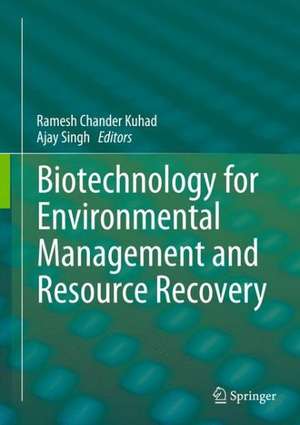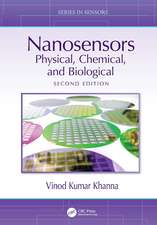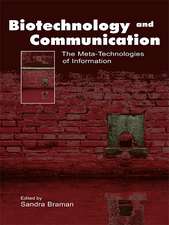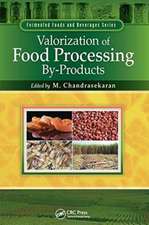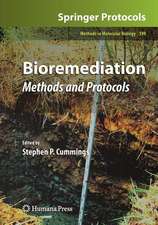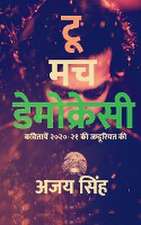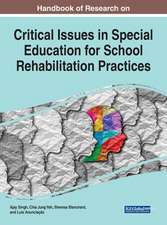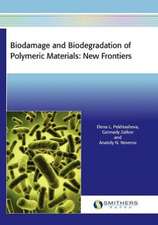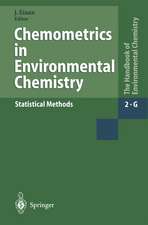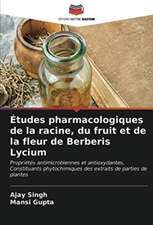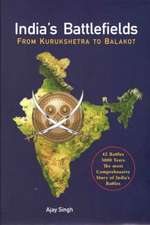Biotechnology for Environmental Management and Resource Recovery
Editat de Ramesh Chander Kuhad, Ajay Singhen Limba Engleză Hardback – 8 apr 2013
| Toate formatele și edițiile | Preț | Express |
|---|---|---|
| Paperback (1) | 792.56 lei 39-44 zile | |
| Springer India – 22 aug 2016 | 792.56 lei 39-44 zile | |
| Hardback (1) | 957.32 lei 6-8 săpt. | |
| Springer India – 8 apr 2013 | 957.32 lei 6-8 săpt. |
Preț: 957.32 lei
Preț vechi: 1167.45 lei
-18% Nou
Puncte Express: 1436
Preț estimativ în valută:
183.19€ • 192.63$ • 151.36£
183.19€ • 192.63$ • 151.36£
Carte tipărită la comandă
Livrare economică 17 aprilie-01 mai
Preluare comenzi: 021 569.72.76
Specificații
ISBN-13: 9788132208754
ISBN-10: 8132208757
Pagini: 308
Ilustrații: XIV, 313 p.
Dimensiuni: 178 x 254 x 20 mm
Greutate: 0.79 kg
Ediția:2013
Editura: Springer India
Colecția Springer
Locul publicării:New Delhi, India
ISBN-10: 8132208757
Pagini: 308
Ilustrații: XIV, 313 p.
Dimensiuni: 178 x 254 x 20 mm
Greutate: 0.79 kg
Ediția:2013
Editura: Springer India
Colecția Springer
Locul publicării:New Delhi, India
Public țintă
ResearchCuprins
1.Microorganisms and enzymes involved in lignin degradation vis-à-vis production of nutritionally rich animal feed: An Overview.- 2.Solid-state bioconversion and animal feed production – present status and future prospects.- 3.Rhizobacteria in Management of Agro-ecosystem.-4.Sustainable enzyme technology for environment: biosensors for monitoring of pollutants and toxic compounds.- 5.Enzymatic retting: A revolution in the handmade papermaking from Calotropis procera.- 6.Cellulases and their biotechnogical applications.- 7.Microbial pectinases and their applications.- 8.Biofuels: the environment friendly energy carriers.- 9.The Interface Between Applied Biocatalysis And Environmental Management.- 10.Metagenomics- Mining Environmental Genomes.- 11.Genetically Modified Microorganisms (GMOs) For Bioremediation.- 12.Ligninolytic enzymes in environmental management.- 13.Microbial phytases in skirmishing and management of environmental phosphorus pollution.- 14.Bioremediation Concepts for Treatment of Distillery Effluent.- 15.Application of natural dyes: An emerging environment friendly solution to handmade paper industry.- 16.Patenting trends in bioremediation technologies for oil contaminated sites.
Notă biografică
Dr. Ramesh Chander Kuhad, M.Sc., M. Phil and Ph.D. (Microbiology), is currently a Professor of Microbiology in the Department of Microbiology and Joint Director, Institute of Life Long Learning, University of Delhi South Campus, New Delhi, India. The main focus of his research is on Microbiology and Biotechnology of Lignocellulose Bioconversion. Over all, the main theme of his research is to make use of waste lignocellulosics and the crop byproducts in developing value added products. He has published more than 120 peer reviewed research papers and chapters with SCI more than 1000 (since 1996) and three books. Dr. Kuhad is a member of Executive council/Planning and Monitoring Board, Academic council and Governing bodies of various Educational Institutes. He has also served as Treasurer (9 years) and General Secretary (6 years) for Association of Microbiologists of India (AMI). He has been the recipient of commonwealth scholarship, UNIDO-ICGEB Short-Term Fellowship, Long-Term Overseas Research Associateship and Short-Term Biotechnology Overseas Associateship awards.Dr. Ajay Singh is the Technical Director of Lystek International Inc., Cambridge and Adjunct Faculty Member at the University of Waterloo, Ontario, Canada. He has authored/edited 10 books in the area of biotechnology, applied bioremediation, published around 200 peer-reviewed research papers and book chapters; he holds 12 international patents. Dr. Singh has 25 years of experience in industrial research/process development and designing various bioreactor-based processes related to wastewater, bioremediation, fermentation and food industries. He is currently an advisor to various international environmental companies and academic organizations in Canada, USA, Asia and Middle East. He has been honored with a young scientist award by Association of Microbiologists of India and is currently a Fellow of National Academy of Biological Sciences and National Academy of Agricultural Sciences of India, and is an active member of international societies such as Water Environment Association of Ontario and Water Environment Federation.
Textul de pe ultima copertă
Various types of secondary agriculture and forestry wastes represent valuable resource materials for developing alternate energy as biofuels and other value added products such as sugars, phenols, furans, organic acids, enzymes and digestible animal feed etc. However, if not managed properly, waste material and environmental contaminants generated by various industries such as food and feed, pulp and paper and textile may lead to severe environmental pollution. The energy, food and feed demand necessitate developing simple and economically viable technologies for environmental management and resource recovery. Microorganisms and their enzymes contribute significantly in utilization of plant residues, resource recovery and eventually in pollution mitigation.
“Biotechnology for Environmental Management and Resource Recovery” presents a comprehensive review of selected research topics in a compendium of 16 chapters related to environmental pollution control and developing biotechnologies in agro-ecosystem management and bioconversion of agro-residues (lignocellulosics) into biofuels, animal feed and paper etc. This book provides a valuable resource for reference and text material to graduate and postgraduate students, researchers, scientists working in the area of microbiology, biotechnology, and environmental science and engineering.
“Biotechnology for Environmental Management and Resource Recovery” presents a comprehensive review of selected research topics in a compendium of 16 chapters related to environmental pollution control and developing biotechnologies in agro-ecosystem management and bioconversion of agro-residues (lignocellulosics) into biofuels, animal feed and paper etc. This book provides a valuable resource for reference and text material to graduate and postgraduate students, researchers, scientists working in the area of microbiology, biotechnology, and environmental science and engineering.
Caracteristici
The book defines the strategies related to environmental resource management of all components of the biophysical environment, both living (biotic) and non-living (abiotic)
It describes advances in information, sequencing, and data analysis and mining technologies
It offers a means of solving practical problems facing humanity in earth sciences, life sciences, biomedical sciences, bioenergy, bioremediation, biotechnology, agriculture, biodefense and microbial forensics
It describes advances in information, sequencing, and data analysis and mining technologies
It offers a means of solving practical problems facing humanity in earth sciences, life sciences, biomedical sciences, bioenergy, bioremediation, biotechnology, agriculture, biodefense and microbial forensics
